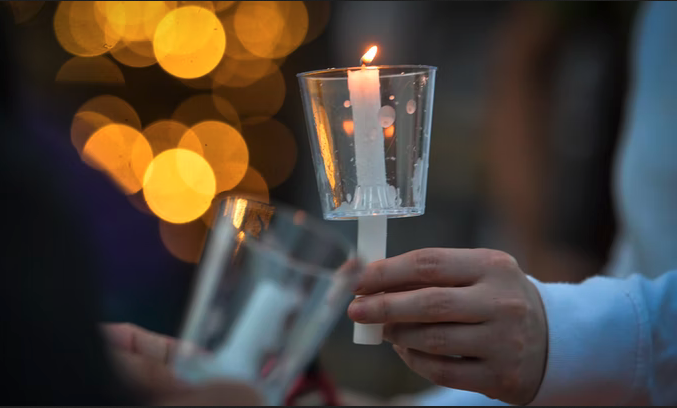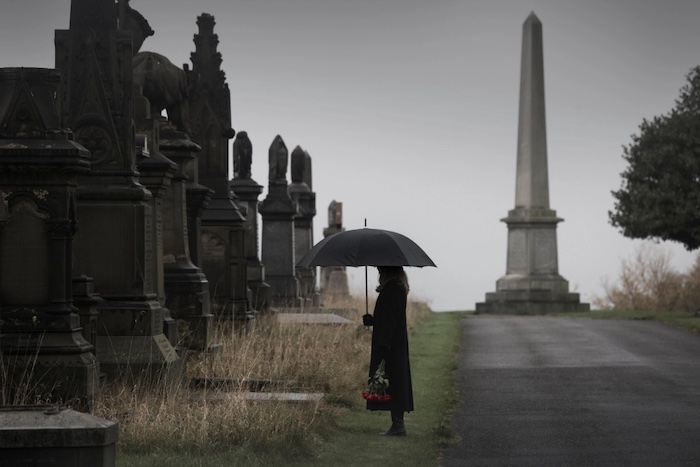
By Ed Cara
The American Psychiatric Association last week officially introduced a new diagnosable mental health condition: prolonged grief disorder. The news, while welcomed by some clinicians and researchers, has also been controversial. At the heart of the debate is the long-running question of how to define suffering, as well as how best to help people cope with the inevitable reality of experiencing loss.
Prolonged grief disorder was codified in a revision to the APA’s fifth edition of the Diagnostic and Statistical Manual of Mental Health Conditions (DSM), though it was previously announced last fall. The basic definition of prolonged grief, according to the APA, is when someone experiences “intense longings for the deceased” that last longer and are more disruptive to a person’s daily functioning than typical grief. Specifically, prolonged grief should only be diagnosed in children if they’re still experiencing these feelings at least six months after a death or loss, and at least a year after for adults.
Some mental health professionals have been calling for the disorder to be added to the DSM for more than a decade. Their research has argued that a small percentage of people — perhaps under 5% of the population — experience feelings of grief that are profoundly different, longer-lasting, and much more harmful from the “normal” mourning we feel after the death of a loved one. What’s more, they add, this grief can be reliably distinguished through screening tools from other conditions that could arise or be triggered by loss, such as depression or post-traumatic stress disorder.
“So, it diverges from normal grief in its duration and intensity as well as in its impact on everyday life,” Maarten Eisma, an assistant professor in clinical psychology at the University of Groningen in the Netherlands who has studied the condition, told Gizmodo in an email.
But for as long as prolonged grief has been held for consideration in the DSM, there have been some professionals aghast at the notion of making it an official condition. Despite assurances from advocates, they fear that the diagnosis will undoubtedly blur the lines of how we talk about and manage grief in unhelpful ways.
“The criteria unfairly target a subset of grieving people to be diagnosed with a mental illness,” Joanne Cacciatore, a trained social worker, researcher, and grief counsellor for over 25 years, told Gizmodo in an email. “For example, the criteria states that at one year, you can be diagnosed with PGD if you are intensely yearning for the person who died. What parent would not yearn for a child who died? Intense emotional pain? After such traumatic losses, what person would not feel intense emotional pain one year later?”
Cacciatore’s own research with bereaved parents has suggested that a majority of them can experience the sort of symptoms that could result in a diagnosis of prolonged grief disorder or other psychiatric diagnoses up to four years after their child’s death. And if so many parents can feel this amount of grief that it’s considered not normal, she asks, then “perhaps it is the measures that are flawed, not the grievers.”
There has also been some data to suggest that the inclusion of PGD will further stigmatised those who are visibly having a harder time dealing with their grief than others. Eisma’s research has found that members of the general public reading vignettes were more likely to stigmatised people diagnosed with prolonged grief after a loved one’s death than they were after hearing about someone in a similar scenario who was not diagnosed with the disorder. Another study of his found a higher level of public stigma for PGD patients compared to those mourning the loss of someone to suicide, which has previously been shown to cause stigma in other studies.
“Compared to people with normal grief reactions, people judge people with severe grief more negatively, react with anger, anxiety, and pity towards them, and prefer to keep their distance from them. In as far as the diagnostic label PGD will gradually come to signal such severe grief reactions, we can expect such labelling to elicit stigmatisation,” he said. At the same time, he added, “many grief experts regard such stigmatisation as a necessary evil.”
There’s long been a tension about the meaning of illness in medicine, with prolonged grief disorder only the latest to spark arguments between practitioners. This debate isn’t simply academic. Insurance companies will rely on the DSM codes, as well as those from the much broader International Classification of Diseases (ICD), to decide whether to cover treatments for someone’s symptoms. So even if the criteria of PGD isn’t perfect or its validation could lead to some unintended consequences, advocates argue that its inclusion will at least allow some people with severe grief to get help that they otherwise wouldn’t have been able to access.
There’s something to be said about that need, according to Sheila Vakharia, a former clinical social worker and currently the deputy director of the Department of Research and Academic Engagement at the Drug Policy Alliance. But she argues that the diagnosis is far from a real structural solution, especially today. She notes that, in a world where thousands of Americans a week continue to die to an ongoing pandemic, how can anyone’s ongoing grief over the losses they’ve experienced be considered abnormal?
“For a diagnosis such as this to be released at this moment, it just feels tone deaf, and it feels decontextualised, both within the broader policy environment and with the fact that we are in a mass disabling and a mass death event — we’re in a global pandemic,” she told Gizmodo by phone. “I think in the midst of a global pandemic, there is a degree of what would be reasonable shock and disbelief that the conditions that allowed our loved ones to pass have been allowed to continue.”
For the foreseeable future, prolonged grief disorder is here to stay. Not only is it now in the DSM, but it was added to the ICD in 2018. There are already some dedicated existing treatments, like grief-focused therapy, available to those newly diagnosed with it, while Eisma is involved with several randomised clinical trials testing online forms of cognitive behavioural therapy. Elsewhere, researchers plan to test whether naltrexone, a drug used to treat alcohol and opioid dependence, could help those with prolonged grief — the theory being that severe grief may work along the same neural pathways as addiction.
Though Vakharia may have issues with PGD, she at least hopes it can shine a light on the greater forces that animate our collective grief, like the pandemic or the still worsening overdose crisis, as well as how we’re allowed to express it.
“If we’re gonna make protracted grief disorder a diagnosis, for instance, are there human resources policies and employment policies and school-based policies that we need to have, so people can have the space to even grieve during that window of time when it immediately happens? Because if we don’t give people enough space to experience the grief in the moment of the loss, then it never really goes away, and it compounds,” she said. “I think another issue is that we’ve all been told to keep moving. In terms of covid, in terms of the overdose crisis, there hasn’t been a lot of space for people to process and feel grief. Instead, there’s been so many calls for us to go back to normal, for us to go back to work, for us to not let so-called fear take over.”
For her part, Cacciatore argues that we shouldn’t have to settle for the best of an imperfect system and for imperfect diagnoses like prolonged grief disorder.
“The system is absolutely broken, and we need an ethical change. Psychological care should not be predicated solely on a diagnosis,” she said. And these reforms shouldn’t just extend to psychology but to our world in general, she added, in order to address the underlying factors that can lead to severe grief, like a lack of social support.
“We need better grief support education in our culture. We need more facilitators and facilities to care for people who are grieving — really care and support, without judgment or coercion — and we need an overhaul of the insurance payment system,” Cacciatore said.
Complete Article ↪HERE↩!













/https://www.thestar.com/content/dam/thestar/uploads/2022/03/31/untitled-design-3--0.png)
/https://www.thestar.com/content/dam/thestar/life/together/pets/2022/04/03/life-after-living-pet-loss-professionals-help-people-work-through-their-grief/pet_secondary_2.jpg)
/https://www.thestar.com/content/dam/thestar/life/together/pets/2022/04/03/life-after-living-pet-loss-professionals-help-people-work-through-their-grief/pet_secondary_3.jpg)
/https://www.thestar.com/content/dam/thestar/life/together/pets/2022/04/03/life-after-living-pet-loss-professionals-help-people-work-through-their-grief/pet_secondary_4.jpg)
/https://www.thestar.com/content/dam/thestar/life/together/pets/2022/04/03/life-after-living-pet-loss-professionals-help-people-work-through-their-grief/pet_secondary_5.jpg)
